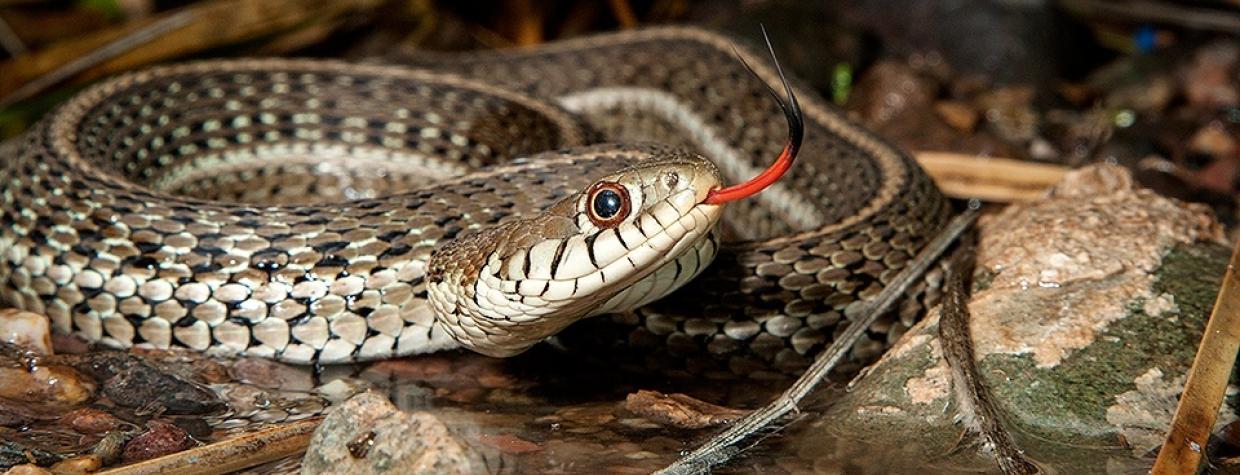Mexican gartersnakes (Thamnophis eques) spend their time in marshy areas and streams, foraging next to the water. In places with dense vegetation, such as riverbanks and cienegas, they prey on frogs, tadpoles, native fish and the occasional lizard or mouse. But the snakes have predators, too, including bullfrogs and predatory fish, which have been introduced to the landscape.
Mexican gartersnakes are typically found in Central and Southeastern Arizona. In particular, they’re known to live near the Agua Fria River, Oak Creek and the Verde River.
The stout-bodied snakes can grow to be longer than 3 feet. They find shelter in waterside vegetation — or in the water itself, if encountered. When threatened, they flatten their heads and strike, sometimes giving off an unpleasant musk from glands at their tails.
A subspecies, the northern Mexican gartersnake (Thamnophis eques megalops), has been listed as threatened by the U.S. Fish and Wildlife Service because the snakes are losing habitat to overgrazing, urbanization and lowered water tables, where the line between dry ground on top and saturated ground below is lower than usual. In some areas, these snakes face local extinction.

